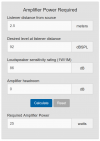- Joined
- Jan 28, 2017
- Messages
- 635
- Likes
- 806
I’m looking to purchase a stereo amp for a 2.1 setup. The Audiophonics purifi based amp that Amir reviewed recently looks ideal except that it has very little power reserve for intermittent peaks in high dynamic range recordings.
In general quality AB amps have substantial power reserves. The STR power amp for example is rated at 400/600 watts into 8/4 ohms and has a kilowatt of burst energy.
Problem is that all of the top rated amps on this site are D class, other than the AHB2 and Topping.
Ignoring price and ergonomics are we better off with superb measuring amps with limited reserve or a solid AB amp with substantial power reserves with a SINAD in the 90’s?
I realize there are crucial variables such as the volume we typically listen at, speaker efficiency, dynamic range in our source material etc. But can we make general recommendations for enthusiasts like myself who don’t understand the technical complexities of modern amps?
In general quality AB amps have substantial power reserves. The STR power amp for example is rated at 400/600 watts into 8/4 ohms and has a kilowatt of burst energy.
Problem is that all of the top rated amps on this site are D class, other than the AHB2 and Topping.
Ignoring price and ergonomics are we better off with superb measuring amps with limited reserve or a solid AB amp with substantial power reserves with a SINAD in the 90’s?
I realize there are crucial variables such as the volume we typically listen at, speaker efficiency, dynamic range in our source material etc. But can we make general recommendations for enthusiasts like myself who don’t understand the technical complexities of modern amps?

